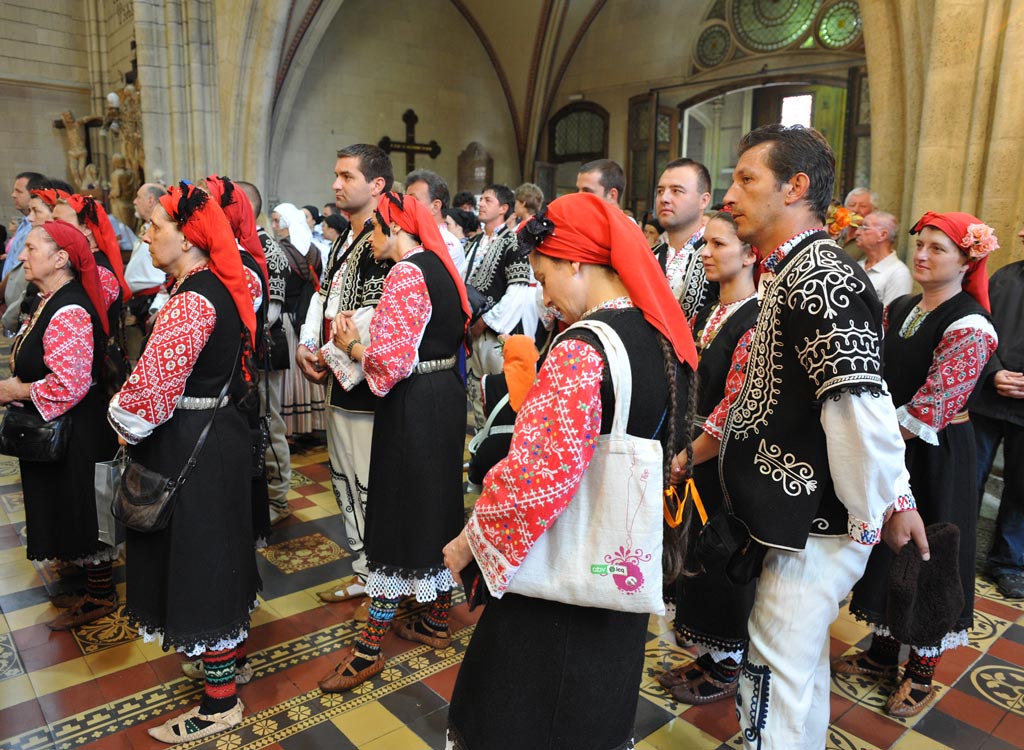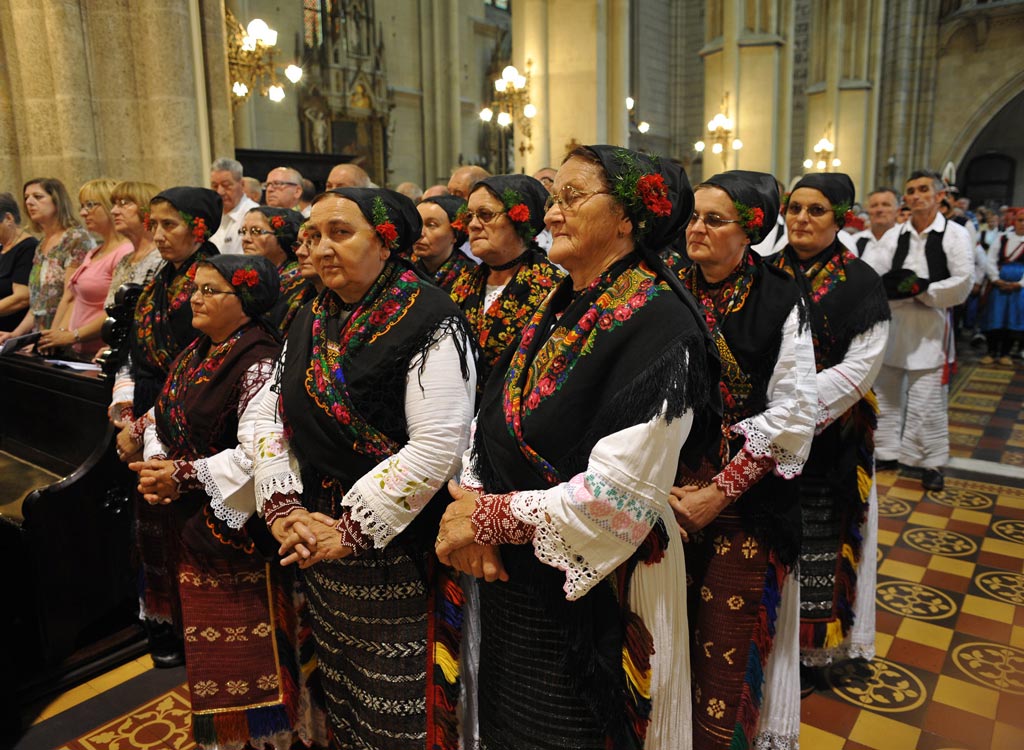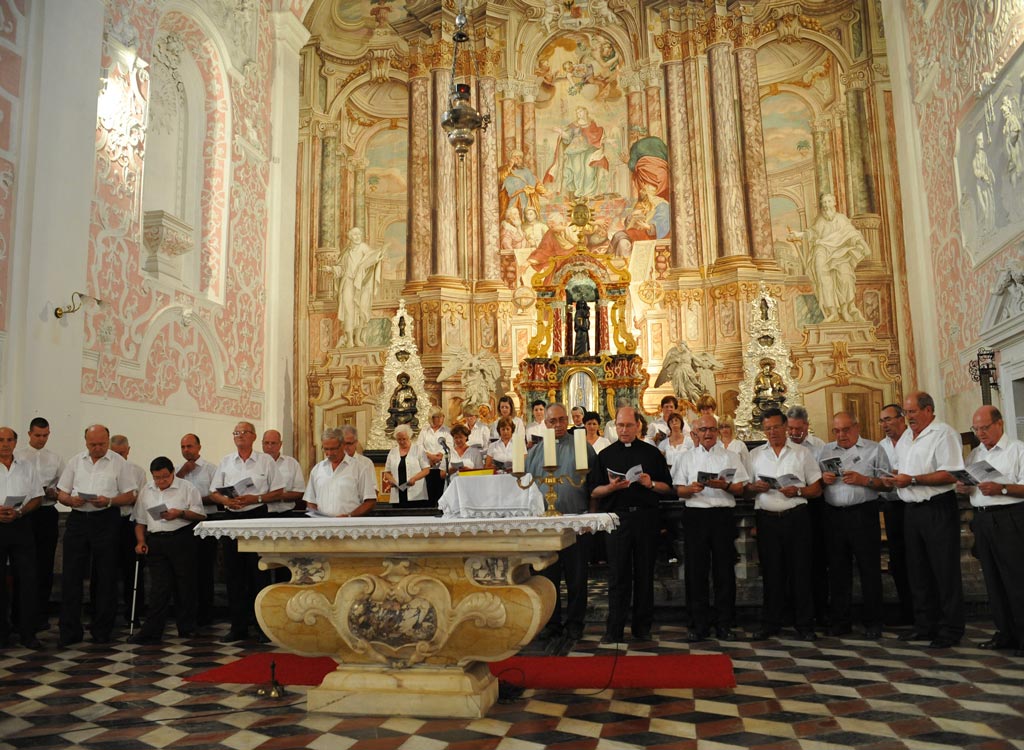44TH INTERNATIONAL FOLKLORE FESTIVAL IN ZAGREB, CROATIA
‘Gospodi pomiluj’, traditional (Glagolitic) church singing of Sali on the island of Dugi Otok
St. Catherine’s Church, Katarinski trg, Sunday, July 25, 2010 at 19.30
A concert by the Korišti crikve svete Marije from Sali on the island of Dugi Otok presents selection of representative examples of their repertoire sung in the parish church of St. Mary through the year. Most of the Korišti crikve svete Marije repertoire can be brought under the common denomination – Glagolitic singing.
The term Glagolitic singing encompasses traditional Roman Catholic liturgic, para-liturgic, and other sacral singing of Croatian Adriatic regions (Dalmatia, Istria, and Primorje). The traces of this type of singing are also found in the Dinaric areas of Croatia (Lika, Gorski Kotar, Kordun), as well as outside of Croatian territory, in the coastal areas of Montenegro and Slovenia. Glagolitic
singing has sprung out of ancient benefits bestowed to Croatian dioceses by the Holy See in the early Middle Ages. The benefits, that have been confirmed on multiple occasions up until the 20th century, granted Croatian priests, socalled “glagoljaši”, to use their own script (Glagolitic) and languages understandable to the common people in Roman Catholic liturgy. Many of the liturgic recorded songs had common characteristic to Gregorian chorals, with noticeable influences of Byzantine, Aquileian, and Beneventan singing. Another characteristic is the fact that traditional church singers adapted their own traditional, profane, vocal music styles to the liturgical repertoire. The example of Sali church traditional singing confirms those characteristics of Glagolitic singing. There are records in Glagolitic script dating from the 16th century onwards that indirectly speak of the history of Glagolitic singing in that island habitat. During bishop Valier’s apostolic visitation in 1579, the parish church in Sali had four Glagolitic missals and four horariums. There, as well as in other parts of Dalmatia, in the late 14th and in the 15th century texts sung in the living vernacular of the time were introduced into traditional Glagolitic singing that used Church Slavic language. Church singing in Church Slavic language and in the vernacular was abandoned in the second half of the 19th century (between 1872 and 1900).
In the 20th century, local teacher Petar Matulina and parish priest don Ante Strgačić restore Glagolitic singing and encourage further development of the singing. In the late 1920s, the prominent local singers headed the practice of church singing, and since 1972, the leadership of church singing was taken over by the Sisters Servants of the Infant Jesus. The concert, divided in seven different parts, represents singing through the year, marking significant holidays (e.g. Christmas) or liturgical periods (e.g. the week preceding Easter) in which they are used. Performers, Korišti, are traditional singers that sing freely and openly, not aspiring to technical quality of performance but focusing on emotional and religious engagement and credibility.
This is the group’s second concert at the International Folklore Festival. In the 1997 concert, Sali singers were lead by academician Jerko Bezić, the greatest scholar of Glagolitic singing tradition in Croatia, who died this year and to whom this year’s concert is dedicated.




